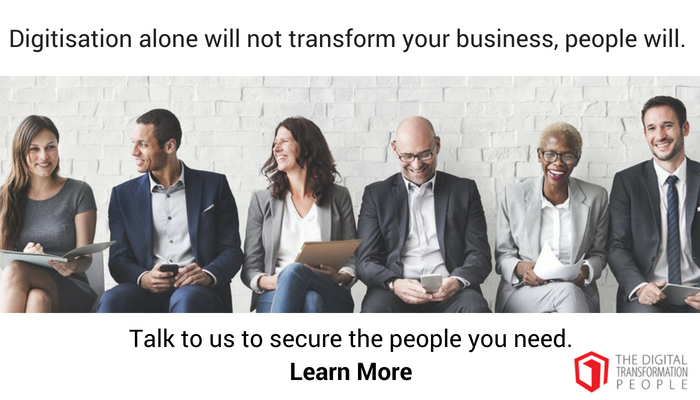Managed services can be game-changing for professional service firms. Whereas most professional service engagements are one-off projects, managed services are typically based on long-term contracts with repeatable monthly or quarterly invoices.
Managed services deliver a lot of benefits. They break the feast or famine cycle. They’re usually pretty scalable. They allow you to predict operating costs against a defined revenue schedule. They stabilize your profits, allowing you to take a long-term perspective.
However, for clients to acquire managed services, they need to buy-in to a long-term vision for what you can do for them. Sometimes a committee is involved in the decision. Getting decision-makers and influencers on the same page is challenging.
I’ve written a different article about why you should adopt managed services. In this article, I want to build the business case for why digital marketing should front-end the sales cycle of managed service programs. If you get this right, you’ll increase win rates and retain clients longer, producing stronger EBITDA. Let me show you how to do this.
TWO KINDS OF MANAGED SERVICE PROGRAMS
Generally, today I see two types of managed service programs: managed services for sophisticated individuals and managed services for organizations. While these two share some common characteristics, they also are quite different, especially when it comes to best-practices in the sales campaign. Let me explain.
Managed services for sophisticated individuals usually have a relatively short sales cycle, sometimes just a single meeting. In some instances, there is only one decision-maker or a couple who pretty much sees things eye-to-eye and shares common motives. They often make decisions based on emotion and who they trust.
Often these people do not have clearly defined notions of what services they need or how much these will cost. But they usually do know what outcomes they want to realize from buying these services. By industry, managed service programs for sophisticated individuals are common to accounting, healthcare, insurance, financial services and construction.
Managed services for organizations, by comparison, can have very long sales cycles, sometimes up to a year or longer. Usually there is a committee involved in the process, comprised of decision-makers and decision-influencers.
People on the committee often have complex motives that may oppose one another. Getting these people to align and say yes can be quite challenging.
These people often have very defined notions of the services they want to buy and how much these services should cost. But because their motives may not be aligned, it can be challenging to put forward a vision that everyone believes in about the specific outcomes the managed services should produce.
By industry, managed service programs for organizations are common to IT consulting, enterprise software, management consulting, recruiting, coaching, accounting, financial services and law.
—————————————————–
KEY TAKE-AWAY:
YOUR DIGITAL MARKETING STRATEGY SHOULD WORK AS HARD AS YOU DO TO POSITION MANAGED SERVICES.
—————————————————–
GENESIS OF NEW CLIENT RELATIONSHIPS
Most new clients for managed service programs come from just a handful of sources. Referrals are still the number one source for new clients. Some new clients come from calling campaigns and targeted outreach. Still others come from business development and marketing efforts.
No matter how the prospect came to be in the sales funnel, their movement through the sales funnel will usually include these key steps:
- They will visit the website of the organization offering the managed service. This often happens right after they’ve been referred but before they contact the service provider.
- They’ll look at the service offering to get a better understanding of it.
- They’ll look at what is included and excluded from the service offering and ask themselves how this matches up to their needs.
- They’ll look for proof that the organization offering the managed service can actually do what they say they can do.
- They’ll usually look at who might be serving them, spending time on the profiles of key people from the firm.
- They will look for pricing information to get a sense of how much the service might cost, if that information is available.
Given this journey, it is my contention that you want your digital marketing strategy to be highly effective and persuasive because it will come into play, no matter what. You can’t get around it in this day and age. In fact, I would argue that what you do in digital marketing will have a huge bearing on your win-rates, client satisfaction and long-term profitability.
THREE PRIMARY GOALS FROM THIS ACTIVITY
In case you’re not familiar with the term digital marketing, let me quickly explain. Digital marketing is just like traditional marketing with one exception. What makes digital marketing, well, digital, is the hyperlink. If you can click a link and go to a webpage, video, article, blog-post or social media property, you have digital marketing.
In this day and age, most marketing involves at least a few digital components. The most popular digital marketing strategies for professional service firms include a website, email marketing and blogging. Add LinkedIn to the mix and you have a pretty common digital marketing strategy for most service firms.
But the question becomes, how does digital marketing impact the managed service sale and can you enhance this impact? I believe the answer is yes. In fact, I recommend that you set three primary goals you for your digital marketing plan as it relates to managed services:
- Increase your win-rates
- Create buy-in to your approach and confidence in your people
- Retain clients for the long-term
In my next article, I’ll explain the digital marketing tactics and tools you need to accomplish these goals. But first let me explore why these three goals really matter.
INCREASE YOUR WIN-RATES
Increasing your win rates is pretty straight forward. This means you’ll close more of the deals where you put forward a proposal. But that is the end of the process: after a prospect has been in dialogue and expressed a real interest in your services.
They sign a proposal after they are convinced your firm is right for them. So how does digital marketing help increase win-rates?
Digital marketing empowers prospects to do their own research on their own schedule, independent of a sales call with your team. This equates to self-persuasion. This is more important than you might realize.
—————————————————–
KEY TAKE-AWAY:
DIGITAL MARKETING ALLOWS PROSPECTS TO SELF-PERSUADE ON THEIR OWN TIME AND SCHEDULE.
—————————————————–
I believe powerful people do not want to be sold, they want to buy. They see themselves in control of the process, making their own choices. This is good news for you because their research leaves a string of digital bread crumbs that you can analyze to help you win.
Sometimes it can be challenging to read the behavior of people to understand whether or not they buy-in to the strategies and approach you are putting forward. This can be especially problematic when dealing with a committee of decision-makers and influencers.
Who is bought-in and who needs more persuasion and more information? If you don’t know this, that puts your win-rates at-risk.
However, if you deploy marketing automation, you will be able to track the digital behavior of everyone on the committee – those digital bread crumbs. This will help you to understand who to focus on to increase win-rates.
For example, if you know that there are four people on a committee and you know that one person in particular is the decision-maker, you can view the digital footprint of that person in your CRM to see what they’ve been up to.
The marketing automation platform we recommend as part of the ultimate digital marketing stack provides insights into every:
- Webpage they’ve clicked on
- Media file they’ve downloaded
- Form they’ve viewed and submitted
- Email they’ve been sent, opened and clicked on
- Social media post they’ve clicked on that brings them to your website
- Minute they’ve spent with your content and ideas
So if you see that a decision-maker has spent little time on your website and with your ideas, it would be wise to focus more efforts on persuading them. This will help increase your win rates.
CREATE BUY-IN TO YOUR APPROACH AND CONFIDENCE IN YOUR PEOPLE
Nearly all of our clients offer long-term managed service programs and no two of these are alike. The secret sauce to success in managed services is often a unique approach to solving problems that the market place is not yet aware of or does not have the capacity, desire or ability to achieve.
This is why creating buy-in to your approach is crucial to success in managed services. In some instances, achieving buy-in to your unique approach can be 90% or more of what it takes to win. This is where digital marketing really shines.
Clear service descriptions on your website that outline what clients can expect and what they will experience are essential to winning trust. But in my experience, people don’t buy services so much as they buy people and ideas.
For every client we serve, there is at least one dynamic individual in the firm who is the creative source of new ideas, energy and ingenuity. This person is often a rainmaker. They are very experienced in the industry, well respected and have a lot of insights.
Their voice resonates with clarity and with gratis. Prospects quickly come to see how the rainmaker’s ideas will benefit them.
The ideas the rainmaker puts forward will help prepare the client for the changes that they must make to realize the outcomes you promise. Let’s be honest about something here.
Most managed service offerings require a client to make changes, sometimes difficult changes that they may not initially like very much. Usually, they will not realize the full benefit of the service unless they make these changes.
This is buy-in – a willingness to make changes and champion a cause. For people to come to this willingness, they have to have full confidence in the approach and in the people recommending the approach. How can digital marketing accelerate this process?
In this day and age, the ideas and the personal brands of rainmakers can be pressed into service 24 hours a day through digital technologies. This can include thought leadership campaigns, email marketing and social media marketing. These technologies not only create clicks, likes and shares, they also create buy-in.
When a thought leader shares some of their best ideas in blog-posts, articles, webinars and videos, these insights help prospective clients see the path forward. Content marketing can be simply noise – a whisper on a scream. I believe that so much of what passes for content marketing today is exactly that, useless information.
But content marketing, done properly, can have the single greatest impact on your win-rates and the willingness of prospective clients to make necessary changes. When prospects are bought-in and they do it on their own terms and their own timelines, they are far more likely to become long-term clients.
RETAIN CLIENTS FOR THE LONG-TERM
This is the number-one most important goal for clients to realize their desired outcomes and for your firm to realize profitability goals. Retaining clients for the long-term is crucial to managed service success. Here’s why.
Many managed service programs deliver some benefits to clients in year-one, but not the big payoff they were hoping for. By the same token, many managed service programs offer limited profitability to service firms in year-one.
But it’s usually after year-one that profits go up. So for everyone to win, you need long-term commitment.
Here is a trend we’ve noticed after analyzing hundreds of managed service relationships. Those prospects who did the most self-persuading through digital means also had the highest tolerance to short-term frustrations, which are very common in year one.
Those prospects who had to be dragged through the sales funnel and persuaded by numerous sales conversations had the lowest tolerance to short-term frustrations, being far more willing to part ways.
This only makes sense, right? When someone is looking for a solution to a problem, if they do their own research, if they see themselves as in control of the buying process, if they make their own decision, then they have far more invested in seeing things through, even if difficulties arise.
This is how digital marketing impacts your profits and EBITDA. It helps you retain clients for the long haul.
Article by channel:
Everything you need to know about Digital Transformation
The best articles, news and events direct to your inbox
Read more articles tagged: Featured









